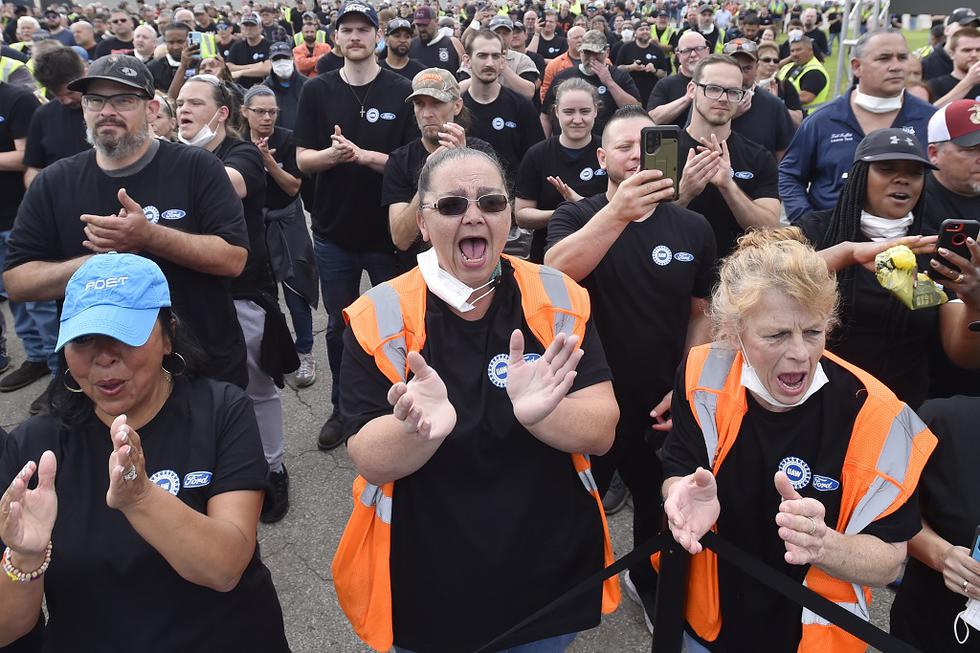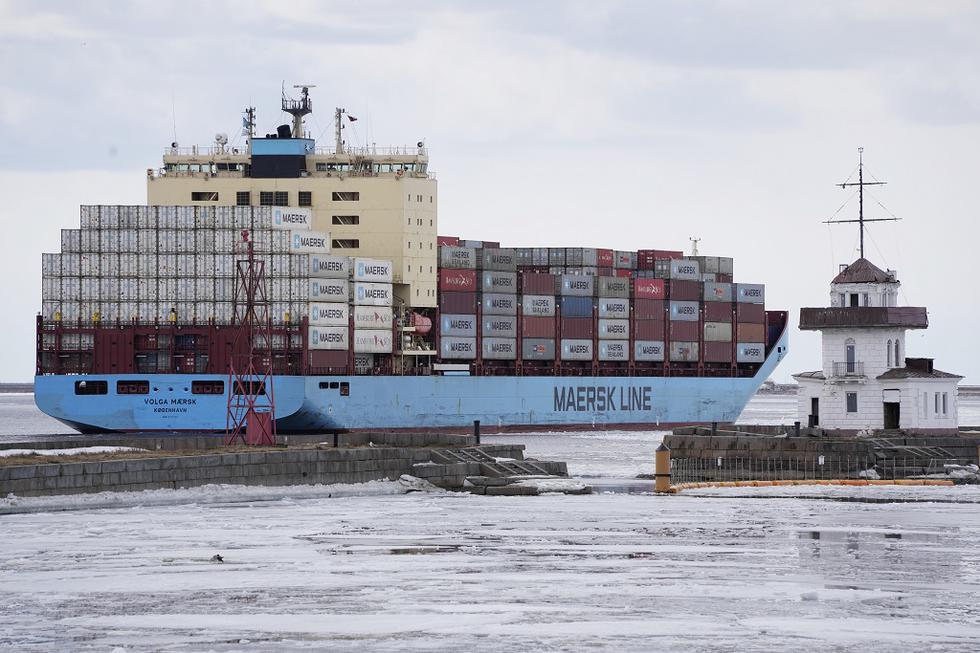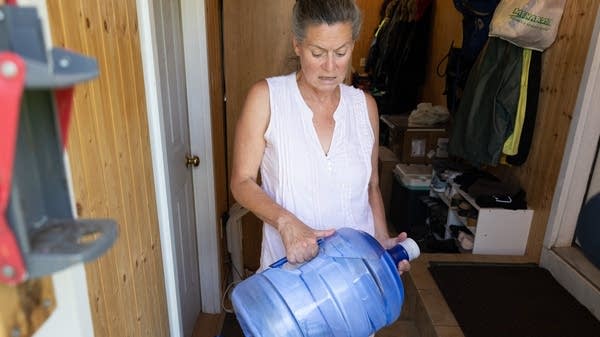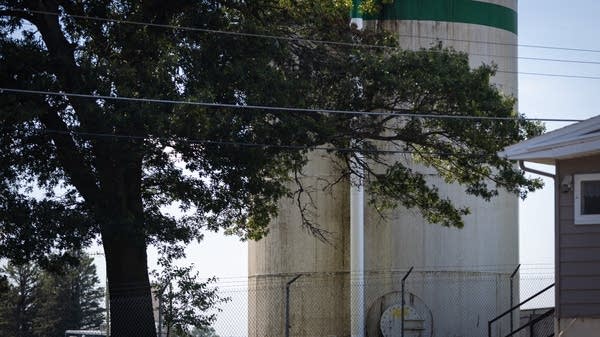Cognitive Dissonance in America’s Dairy Land
Wisconsin farmers admire and depend on their undocumented Mexican laborers—and still vote for Trump.
June 20, 2022
Washington Monthly
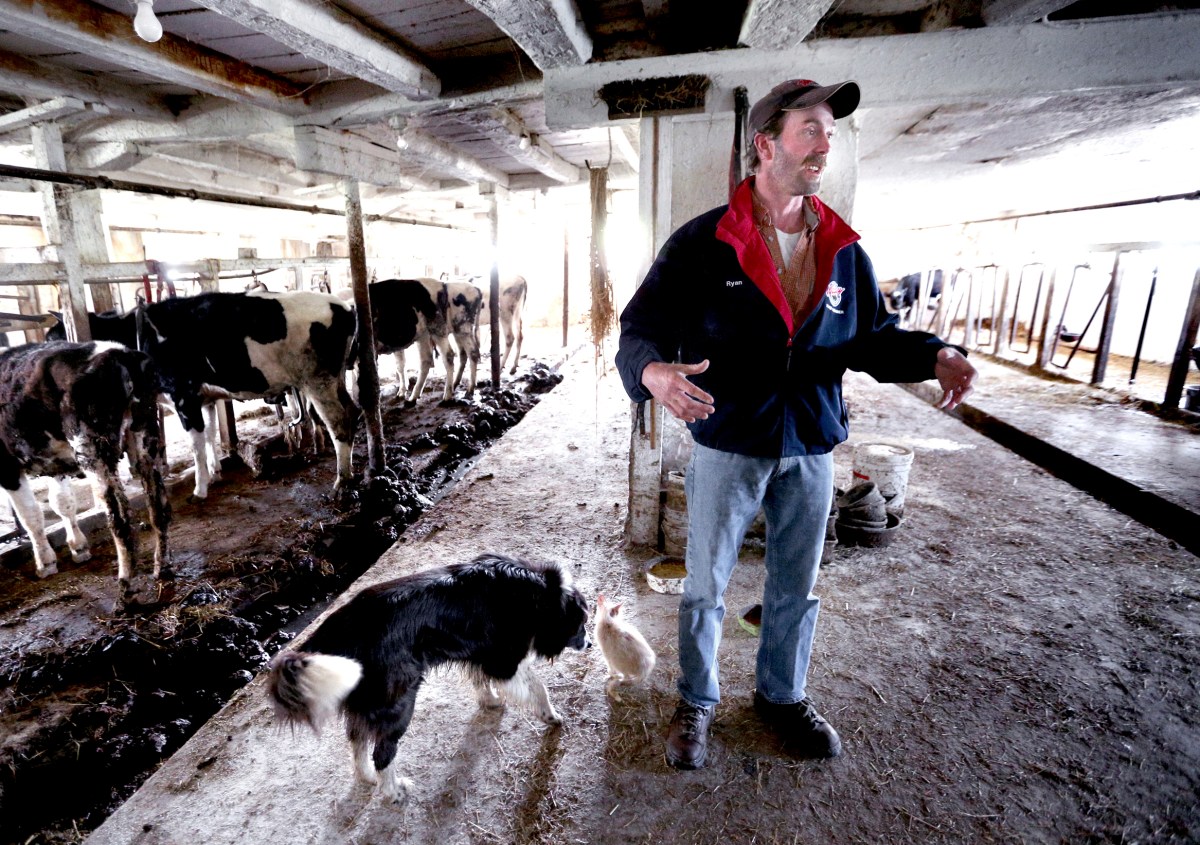
This May 20, 2019, photo shows Ryan Dunham on his farm in rural Westby, Wis. Dunham made the hard decision to sell his 50 head milking heard in April due to the challenging finances he faced from low milk prices. (Peter Thomson/La Crosse Tribune via AP)
At “dinner” time—in the middle of the afternoon—the dairy farmer, his wife, a brother-in-law, and a couple of friends gathered around the big kitchen table. There was a ham, and a turkey, and gigantic bowls of potatoes and vegetables, and two pies on the kitchen counter.
Two of the men were missing one finger each. “Caught it in a grain screw,” one explained. I was there to report a magazine story. The guests had come to work on the farm for a day, and the big meal was one of the perks.
Milked: How an American Crisis Brought Together
Midwestern Dairy Farmers and Mexican Workers
By Ruth Conniff
New Press, 313 pp.
The farmer needed the help. This was 1997. A wave of farm consolidation had been building across the country, and, as the farmer said to me, “We had to get big or get out.” That became a mantra across farm country, and especially on dairy farms.
Free market economics demanded it. As old New Deal supply-demand price management gave way, and as every link in the supply chain all the way to the retail shelf consolidated—think Walmart and Kroger behemoths—the price of milk and dairy products dove lower, cutting margins for farmers. They had to scale up to force per-unit prices down. Herds of 100 cows became herds of 300, then 1,000, then 2,000. So even as farms disappeared—in 1987, there were 146,685 farms with dairy cows in the United States; by 2017, there were 54,599—the industry produced more milk than ever.
You could celebrate this as “efficiency,” without considering the cost in the destruction of communities and the price paid by farmers, who now die by suicide at one of the highest rates of any occupation. Or you could read Milked, Ruth Conniff’s illuminating, distressing, yet oddly optimistic exploration of America’s Dairy Land.
Back in 1997, the farmer outside La Crosse, Wisconsin, had not hired any Mexican labor. He wasn’t sure what he was going to do—but he knew he had to do something. He could start his 14-hour day at 4:30 a.m., work as farmer, vet, mechanic, biologist. His wife could be accountant and business manager. But they could not run the place alone.
Their son had just started high school. The farmer hoped the boy would take over one day. The boy, having worked on the farm, and seen his father’s brutal schedule, didn’t want to take over, though he hadn’t told his father yet. He wanted to get as far away from a dairy farm as he could possibly go.
Conniff, a Wisconsin native and the editor in chief of the Wisconsin Examiner, writes a vivid tale. She writes about quinceañeras—the celebration of a Hispanic girl’s 15th birthday—in a land of Trump-voting farmers; about illegal immigration and economic necessity; about the gumption of both farmers and laborers. These are sources of optimism in what is sometimes a perverse story. Farmers respect hard work, family, devotion. With few exceptions, the Mexicans they hire share these qualities.
Mexican fathers milk cows while trying to parent misbehaving sons living 2,000 miles away with their mothers. Immigrant hands send wages home to build houses they hope to move into one day when they can return to their country. They work six- and seven-day weeks for years on end, doing jobs no American will do for the low wages the farmers pay. They navigate life in small-town America with limited English, occasional harassment, and fear of deportation.
Conniff’s farmers marvel at all this. Some come not only to respect the immigrant laborers, but also to love them. The farmer John Rosenow employs two Mexicans named Fermin and Roberto. Conniff writes,
Maybe the two men will want to take part ownership in the farm. John hopes so. He doesn’t have any children of his own, and he wants this to be his legacy: helping the next generation of immigrants take their place in the history of the valley.
But Conniff also makes the perversity clear, both explicitly and by implication. Farm owners twist in the convoluted political gymnastics that enable them to vote for Trump in 2020 while also supporting their workers’ ability to live in the United States despite being here illegally.
Bill Traun, for example, employs Lupe and Blanca, who give names to all of Bill’s cows. He loves that—and them. According to Conniff,
Bill didn’t like it when Donald Trump started saying bad things about immigrants. “It scared them, and it scared me,” he says. But over time, he felt that Trump’s anti-
immigrant rhetoric kind of faded out. And the border wall didn’t stop Mexican workers from coming to the farms in the area. During the pandemic, he notes, Trump sent a lot of aid to farmers.
Indeed, the farmers seem to admire the guts it takes to trek from rural Mexico to rural Wisconsin; that moxie contributes to their admiration of their Mexican employees.
This past March, a teenage girl fell from the new, higher border wall near San Diego and fractured her skull, neck, and back. On April 11, a woman died after becoming entangled in climbing gear while trying to scale the border wall near Douglas, Arizona. And on May 6, a man died while trying to scale the wall near San Diego. Two women, one in her 30s and one in her 50s, were seriously injured.
The San Diego Union-Tribune reported on April 29:
In 2016 … UC San Diego Health admitted border-wall injury patients at a rate of about 49 people per 100,000 local Border Patrol apprehensions. By 2021, that rate grew to about 449 people per 100,000 apprehensions.
The border wall does not stop people from coming to the United States. It never has. It only makes it more dangerous for immigrants to provide labor for Wisconsin farmers.
Some of Conniff’s farmworkers are robbed by gangs or abused by smugglers on their way to America. Some are raped. Some die in the desert. The suffering their laborers endure seems not to trouble some of the farmers. But they are in a bad spot, too. Millions of dollars might flow through their mega farms, but their profits are often low, after accounting for loan payments, seed, feed, equipment, and other expenses. And they can’t find American labor to muck out pens and assist in a calf delivery at three in the morning.
The problems Conniff explores require systemic reform. She suggests changing the current H-2A visa program, which covers agricultural workers. Now, these workers have to return to their home countries within a year. This doesn’t work for dairy farms, which operate around the clock, every day of the year. No farmer can afford to have workers leave for extended periods. Democrats offered legislation to put H-2A workers on a path to citizenship, but the bill failed.
Congress, the Federal Trade Commission, and the Department of Justice could crack down on the ever-increasing consolidation that has put farmers in this position in the first place. There are signs that this is beginning to happen.
But there’s much more involved than immigration law and antitrust policy. Conniff touches on the effect of International Monetary Fund austerity demands on Mexican agriculture, NAFTA, and other big-picture forces that could generally be grouped under the label of economic neoliberalism. These forces have conspired to create the situation in which farmers and workers now find themselves. Those of us who are subject to America’s increasingly bizarre food system are, of course, affected as well.
Iwould have enjoyed seeing more of this kind of context in Milked. Even so, Conniff’s great gift is in placing individual people and their lives at the center of what could otherwise come across as a big, complicated snoozer of a story.
The residents of rural America used to vote for Democrats. And one farmer told me recently, “I don’t see how anybody who farms couldn’t vote Democratic.” The voices Conniff brings to life evoke the days of New Deal programs like the Agricultural Adjustment Act, rural electrification, and antitrust enforcement, all of which were boons to rural America.
There are still rural votes to be had, and in a cockamamie electoral system that overweights land area, no political party can afford to ignore them. It’s vital to listen to what people in those areas are saying, thinking, and doing, and to learn how they’re coping and fighting small-scale battles of their own—not only for Democratic electoral success, but also for the health of the nation.
“Bill didn’t like it when Donald Trump started saying bad things about immigrants. ‘It scared them, and it scared me,’ he says. But over time, he felt that Trump’s anti-immigrant rhetoric kind of faded out … During the pandemic, he notes, Trump sent a lot of aid to farmers.”
John Rosenow, one of Conniff’s main subjects, views the land with near-religious reverence. He’s also something of a liberal, which makes him a minority among his fellow farmers. But other, more conservative farmers join him on trips to Mexican villages. These trips are organized by a local woman, Shaun Duvall, a Spanish speaker who acts as translator and cultural interpreter between the farmers and the laborers. Once in Mexico, the American farmers meet the families of the people who work for them. They see the houses that are paid for by the wages workers send home. In the process, any Fox News–stoked fear dissolves and the farmers see parallel images of themselves. They reflect on how immigrants, many of them undocumented, have transformed small American towns—in some cases saving them from oblivion—by opening grocery stores, restaurants, and barbershops.
Most tellingly, the Americans find themselves admiring the farms and communities their current and former employees enjoy in Mexico: some fruit trees, a few animals, lots of family, and many celebrations. The Mexicans, in turn, seem to feel a little sorry
BRIAN ALEXANDER
Brian Alexander is a journalist and author. His two most recent books are Glass House: The 1% Economy and the Shattering of the All-American Town, and The Hospital: Life, Death and Dollars in a Small American Town.







